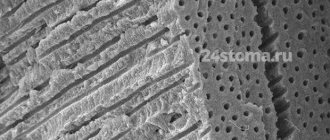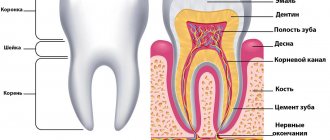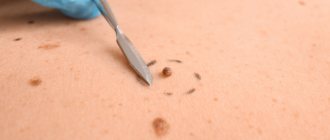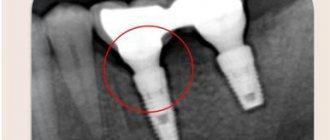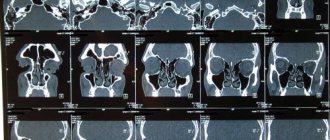Epididymitis and orchitis are two diseases of the male genital area; they are extremely rarely diagnosed separately. Orchitis is an inflammation of the testicle, and epididymitis is an inflammation of its appendage. Since anatomically the testicle and epididymis are one area, inflammation easily spreads to neighboring tissues.
In the vast majority of cases, the cause of inflammation is infection: influenza, chicken pox, mumps, typhus. Sometimes provocateurs can be insufficient or excessive sexual activity, prolonged abstinence, and some other urological pathologies: urethritis, vesiculitis, prostatitis.
Why are worms dangerous for dogs?
Parasites in dogs are a common occurrence if prevention is ignored. The immune system of a healthy pet kills them up to a certain stage, but if there are too many parasites, it may not be able to cope. Dogs with weakened immune systems and puppies are also at risk.
Worms don't just live in the body. They parasitize on it, eating tissues and organs, as well as food from which the dog extracts nutrients. Result:
- decline in immunity;
- developmental delay in puppies;
- itching, pain, discomfort have a bad effect on the animal’s nervous system;
- tendency to various diseases;
- intoxication of the body, allergies provoked by waste products of worms.
Parasites cause diseases of the liver, lungs, heart, and brain. The dog may develop jaundice, intestinal obstruction, and blindness. Large individuals can clog a vessel and cause thrombosis, which will cause the death of the animal.
Are worms transmitted from dogs to people?
Whether a person becomes infected with worms depends on the parasite. Among them there are individuals that live only on dogs, and there are also those that can live in humans. Therefore, maintain hygiene - wash your hands with soap after each contact with an animal, do not let your pet on the bed, etc.
How does a chronic process manifest itself?
If you ignore the symptoms of an acute condition, then orchitis and epididymitis can become chronic.
Chronic orchitis can only be indicated by pain in the testicle when touched or during active movements. Chronic epididymitis manifests itself with the following symptoms:
- constant increase in temperature to subfebrile values;
- soreness of the scrotum;
- discomfort and even pain in the area of the appendage of the testicle.
In the chronic course, there are no pronounced signs; the man feels a general malaise and periodic moderate pain in the scrotum area, which subsides and then worsens again.
Ways of infecting dogs with worms
A dog experiences the world through its eyes, ears, and mouth. She often grabs unfamiliar objects on the street, drinks from puddles, sniffs/eats feces, foods (raw meat, fish, unwashed vegetables). Along with dirt and bacteria, worm eggs enter the body, become embedded in the intestines, and begin to grow and develop.
Parasites enter the body through the blood (hematogenous route), for example, through a mosquito or flea bite. The larvae enter the circulatory system and spread throughout the body.
Puppies can easily become infected in utero from their mother. Therefore, veterinarians recommend deworming for the first time a month, even if the puppy has not seen the street. You might be surprised at the size of worms that can come out of your baby.
Types of worms in dogs
There are different types of worms, not all of them infect dogs. For example, some parasites typical of cats cannot be transmitted to dogs. There are also worms for which the dog is the definitive host, and for others it is a carrier. Having gone through a certain cycle in his body, the parasites are excreted in the feces and move on.
What do worms look like in a dog? Doctors identify 3 groups of worms that infect pets:
- Nematodes are round parasites. Among them are the pathogens of dirofilariasis (affect the heart), toxarosis (heart, liver, lungs), ascariasis (intestines, liver, gall bladder, esophagus).
- Cestodes are tapeworms, the largest parasites. They cause diphyllobothriasis (worm body up to 10 m), dipylidia (1.5 m), echinococcosis (0.5 m).
- Trematodes are flat helminths. Parasites attach to the lungs, liver, intestines, and pancreas. Trematodes feed on lymph, mucus, and blood. The most common diseases are paragonimiasis, alariasis, and opisthorchiasis.
Symptoms and signs of worms in dogs
Many pets appear clinically healthy, so owners are not worried. Important: the appearance of symptoms is a dangerous signal that indicates that the dog’s organs are seriously affected. Therefore, weak signs of even some of them are a reason to go to the doctor.
How to tell if your dog has worms: weight loss
A common symptom of helminthic infestation is sudden weight loss accompanied by increased appetite. Parasites take away from the dog elements of the substance that enter the body with food. The result is exhaustion of the animal.
Other symptoms
- Rumbling in the stomach due to an enlarged abdomen. The symptom is especially often caused by round parasites.
- Frequent vomiting, diarrhea.
- Mucus and blood in stool.
- Red spots on the stomach.
- Heavy shedding, dulling of fur.
- Suspicious movement in the stool.
- Itching in the perineum, anus, which is why the animal rides on its butt and licks itself.
- Pale mucous membranes of the eyes and mouth (anemia).
Dangerous symptoms
With toxocariasis, when worms become established in the gastrointestinal tract, the animal may refuse to eat. Cough, cramps, and digestive problems appear.
With dirofilariasis, which affects the heart and blood vessels, the following are observed:
- swelling of the paws;
- heart murmurs;
- itching;
- prostration;
- cough;
- bloating.
Heartworm is dangerous because it manifests itself too late, when the animal is difficult to save. Therefore, when they appear, immediately consult a doctor, otherwise the dog may die.
Text of the book “The egg cures: swelling of the legs, indigestion, loss of voice, dandruff and baldness, dry skin”
Purulent wounds and abscesses
Various cuts, abrasions and small wounds are injuries that we encounter regularly.
And, if they are not treated promptly and correctly, they can become infected, which can cause big troubles. If such a misfortune happened in the absence of the necessary medications, to treat such injuries you can successfully use much of what is found in almost every kitchen, including ordinary chicken eggs. • Thoroughly mix the yolk of 1 raw chicken egg with 1 teaspoon of powdered sugar. Add 1 tbsp. a spoonful of sunflower oil and stir everything again until the powdered sugar dissolves. Place the resulting mixture on cotton wool, apply to the sore spot and hold for as long as possible.
• Mix to the consistency of wet clay: 2 fresh egg yolks, 1 tbsp. a spoonful of honey and 1/2 teaspoon of table salt. Apply the resulting mixture to the abscess. Carry out the procedure daily at night, until it is opened.
• Hard-boil 1 chicken egg, separate the yolk, grind it and mix with 1 teaspoon of butter. Spread the mixture on gauze folded in three layers and apply to the sore spot.
• Take the white of 1 raw egg, 1 teaspoon of butter and 1 teaspoon of planed baby soap. Mix everything well until a homogeneous mass is formed. Apply the resulting creamy, thick mixture to the site of the abscess, wrap it in film and bandage it with a bandage. Keep the bandage on for 6–8 hours.
• Grate a piece of laundry soap, add the white of 1 raw egg and mix, adding a little table salt, until a paste forms. Place the resulting mixture on a cotton pad, cover the top with gauze and secure it to the sore spot. Keep it as long as you can tolerate it. Carry out the procedure daily until the abscess opens.
• Mix 5 fresh egg yolks with 20 g of pine, spruce or fir resin (resin). Apply the resulting mixture to the purulent wound until it is cleansed of pus.
• Take 1 fresh chicken egg, wash it thoroughly with soda, dry it and treat it with alcohol or cologne. After this, carefully chop the protein, take the protein with a disposable syringe (without a needle), inject (as much as will go in) into an open bottle of penicillin (pharmaceutical drug), close the stopper and shake vigorously until the medicine is completely dissolved. Soak a clean napkin with the resulting mixture, apply to the wound, cover with compress paper on top and secure with a bandage. Carry out the procedure every other day.
Attention!
For those who are allergic to penicillin, this drug is contraindicated.
Bruises and sprains
Injury
– damage to tissues and organs of the body without violating the integrity of the skin, but with damage to deep tissues: subcutaneous fatty tissue, as well as nerve endings and blood vessels. There is hardly a person who has never suffered from a bruise received from a fall or as a result of a blow. With a strong blow, swelling (hematoma) may form, the development of which is explained by damage to the blood vessel. In this case, the size of the hematoma depends on the caliber of the damaged vessel and the anatomical features of the subcutaneous and underlying tissues at the site of the injury. In addition, the tissues become saturated with blood, and the site of the injury becomes stained - a so-called bruise is formed. Fresh bruising is usually bluish-purple or blue in color. Then, after the breakdown or resorption of hemoglobin, the color of the bruised area changes: after three to four days it becomes brownish-green, on the fifth or sixth day it becomes yellow, and by the seventh to nine days after the injury the bruise becomes two or even three colors.
Attention!
It should be remembered that with any bruise, deeper organs can be damaged, and therefore, in case of severe bruises and suspicion of a more serious injury, the victim needs urgent medical attention.
Stretching
– damage to ligaments, muscles, tendons and other tissues without violating their anatomical integrity is also one of the most common injuries in everyday life. Most often, the ligaments of the ankle (when the foot suddenly turns inward or outward), knee (when there is a sudden load on the knee) and wrist joints (when falling on an outstretched arm) joints are damaged. Characteristic signs of a sprain are pain and swelling in the joint area and limited mobility of the injured limb.
How to get rid of pain and swelling after a bruise or sprain? And in this case, you can use what you almost always have on hand - chicken eggs.
✓ To quickly get rid of a bruise: beat the white of 1 raw chicken egg, dip a cotton swab in it and apply to the bruise. Carry out the procedure 3 times a day. The dried protein is then washed off with warm water.
Note.
Raw egg whites can also be used to lubricate sore joints.
✓ Mix baby soap (grated), vodka and egg white in a ratio of 2:1:1. Stir until a homogeneous mass is formed, then soak gauze in it and bandage it to the sore spot.
✓ Fold the bandage in four, thickly apply the white of a fresh chicken egg to it and wrap it around the injured area. Apply compress paper on top of the bandage and cover with a woolen scarf. Keep for 5-6 hours or carry out the procedure overnight.
Attention!
The proposed therapeutic agents are recommended to be used a day or two after injury; during the first day, only cold is used to reduce pain and swelling! In addition, during the first 24 hours after a sprain, it is better to fix the injured limb by applying a bandage fixation bandage to the damaged joint. It should not be too tight and interfere with blood circulation. And if the skin below the bandage turns pale or blue, it is necessary to immediately loosen the bandage and reapply the bandage, but with less force.
Acute poisoning: when can eggs be used?
Recently, due to the intensive chemicalization of our everyday life, the emergence and widespread distribution of more and more new, sometimes very toxic chemical compounds, the number of acute poisonings has sharply increased throughout the world. This phenomenon has become so widespread that poisoning is now called a new epidemic of the 21st century.
There are currently quite a lot of toxic substances that cause acute poisoning: these are household chemicals, pesticides used to combat harmful insects, alcohol substitutes, etc. But first of all, these are various cauterizing liquids: organic and inorganic acids, alkalis , oxidizing agents. Thus, almost 70% of all acute poisonings with cauterizing poisons are poisonings with organic acids, of which acetic (methanecarboxylic) acid is the most dangerous. It is a colorless liquid with a very characteristic pungent odor and mixes well with water, alcohol, ether and other organic solvents. Widely used both in industry and in everyday life. Available in the form of vinegar essence (80% acetic acid) and table vinegar (9% aqueous solution of acetic acid).
Inorganic acids (sulfuric, hydrochloric, nitric, etc.), also widely used in many industries and in everyday life, are also dangerous. For example, a solution of zinc chloride in hydrochloric acid is well known as soldering acid, and battery fluid is nothing more than concentrated sulfuric acid. Poisoning with inorganic acids accounts for about 7% of poisonings with cauterizing liquids. The most common poisonings are hydrochloric acid (a colorless solution of hydrogen chloride in water) and sulfuric acid (an oily, clear and colorless liquid in its pure form).
Acute poisoning can happen anywhere and at any time. Therefore, every person must be prepared to immediately provide the necessary assistance to the victim. Meanwhile, there are many different myths and misconceptions regarding poisoning, and many of them can be downright dangerous. A person who does not know what to do and acts illiterately, instead of improving the condition of the victim, can cause him harm, often very serious.
One of these widespread misconceptions is the belief that in case of any poisoning, the victim must be artificially induced to vomit. However, this should not always be done; moreover, sometimes inducing vomiting is simply dangerous. For example, in case of poisoning with acid, as with other cauterizing liquids, the use of small rinses, that is, drinking several glasses of water followed by artificially induced vomiting, is extremely dangerous: the repeated passage of acid through the esophagus intensifies its burn. In addition, there is a danger of acid entering the respiratory tract and causing burns.
Naturally, if acid or other cauterizing liquid gets inside, urgent gastric lavage is necessary, but only through a tube, which is a medical procedure. Therefore, in order to delay the absorption of the poison and protect the lining of the stomach for some time from irritating effects, you can give the victim to drink some enveloping agent, including one prepared from fresh chicken eggs:
✓ Stir well (so that the drug can be easily swallowed) 2-3 raw egg whites in 0.5-1 liters of water. Take the resulting protein water orally.
Note.
Egg white not only binds acid ions, slowing down their absorption, and protects the gastric mucosa from irritation, but is an antidote to all acids, capable of eliminating or weakening their specific toxic effect. Protein water can also be taken for severe diarrhea: drink a little warm.
✓ Beat 4 raw chicken eggs in 0.5 liters of milk. Take the resulting mixture orally.
✓ Beat 1 raw egg white with 1/2 cup milk until foamy. Take the resulting mixture orally as an emetic in case of poisoning with arsenic, lead, copper.
Attention!
In case of poisoning with carbolic acid and its derivatives (phenol, lysol), milk, butter and fats are contraindicated. Eggs, milk and butter should not be given to the victim in case of poisoning with organochlorine compounds (chlorophos, karbofos, etc.), since they are fat-soluble poisons. Therefore, fresh chicken eggs should be used as an antidote and coating agent only if it is known exactly what substance caused the poisoning.
Stomach diseases
According to the famous author of “Don Quixote” M. Cervantes, the health of the whole body is forged in the forge of our stomach
. Indeed, the stomach plays one of the most significant roles in the functioning of the digestive system. We can say that it is he who sets the tone for the entire digestive system. Already 5–10 minutes after the start of a meal, gastric juice begins to be secreted, and its secretion continues as long as the food is in the stomach. At the same time, the stomach spends 2–4 hours digesting a standard lunch. In total, during the day, the stomach of an adult produces approximately 5 glasses of gastric juice containing 0.2–0.5% hydrochloric acid. And during his life, this great worker digests on average up to 22,000 kg of all kinds of food.
But at the same time, the human stomach is also a field for the occurrence of all kinds of diseases due to the close relationships of this organ with other systems of the body. Therefore, it is very important to monitor the condition of your stomach in order to notice problems in its functioning in time and take the necessary measures.
Gastritis
Chronic gastritis is currently one of the most common diseases, affecting up to 30–40% of the population of highly developed countries and up to 70–80% of residents of developing countries. This is a long-term chronic disease characterized by structural restructuring of the mucous membrane, as well as disruption of the secretory and motor activity of the stomach. Chronic gastritis often develops gradually due to systematic violations of the diet, malnutrition or, conversely, overeating, abuse of certain foods that have an adverse effect on the gastric mucosa, and a number of other negative factors. All this taken together ultimately leads to disruption of the secretion of gastric juice and difficulty digesting food.
How can you help your suffering stomach in this case?
✓ For a month, drink a raw, fresh (preferably no more than 24 hours) chicken egg every morning on an empty stomach (1 hour before breakfast).
✓ Hard-boil 7 chicken eggs (preferably from domestic chickens), separate the yolks. Grind 6 tbsp into powder. spoons of peeled pumpkin seeds and mix with the yolks, adding 500 ml of sunflower oil. Keep the resulting mixture in a water bath for 20 minutes, then cool. Take 1 teaspoon on an empty stomach for 5 days. Take a five-day break and take it again for 5 days. Continue treatment according to this regimen until the remedy runs out.
✓ Fry the shell of 1 fresh chicken egg in a clean frying pan until yellowish and grind into powder. Take 1 time per day before meals for 10 days for stomach pain.
Note.
Do you suffer from chronic gastritis? You can find out about this using the following test. You should only answer “yes” or “no” to questions.
1. Do you often eat smoked and spicy foods?
2. After eating, do you experience a feeling of pressure and/or heaviness in the epigastric region and/or a feeling of fullness in the abdomen?
3. Immediately after eating or a short time after eating, do you feel an aching, dull pain in the epigastric region?
4. Have you lost your sense of satisfaction from food?
5. Do you have a metallic and bitter taste in your mouth?
6. Do you often experience nausea and vomiting after an error in diet?
7. Does burping taste bitter and rotten?
8. Do you often suffer from heartburn?
9. Are you prone to diarrhea (diarrhea)?
10. Have you become more irritable and tired quickly?
11. Do you have excessive sweating of your extremities?
12. Is your tongue covered with a white or yellow-white coating with teeth marks on the side surface?
13. Are there any sticking in the corners of your mouth, bleeding gums, increased peeling of the skin and brittle nails?
The more positive answers you gave (especially from 1 to 9), the higher the likelihood of you having chronic gastritis. It is recommended to visit a doctor and undergo the necessary medical examination, since chronic gastritis can occur with normal, low or high acidity of gastric juice, and depending on this, appropriate treatment is prescribed.
Positive answers to the 10th and 11th questions also indicate signs of asthenoneurotic syndrome, often observed in those who suffer from chronic gastritis.
This disease is often accompanied by signs of hypovitaminosis (lack of vitamins), which may be indicated by positive answers to the 12th and 13th questions.
Peptic ulcer of the stomach and duodenum
Peptic ulcer is a chronic recurrent disease associated with damage to the mucous membrane of the stomach or duodenum in the form of ulcers of various shapes and depths. Most often, ulcers develop on the lesser curvature of the stomach, since through it food and gastric juice, passing through the stomach, enter the duodenum, exposing this part to constant mechanical and chemical stress.
To treat this serious illness, various medicinal products prepared from chicken eggs have long been widely used.
• Mix well 1 fresh raw chicken egg with 1 tbsp. spoon of wheat flour and take the resulting mixture on an empty stomach for 10 days.
Note.
This remedy can also be used for intestinal pain and vomiting.
• Beat the white of 1 raw chicken egg with 1 teaspoon of powdered sugar and 1 tbsp. spoon of olive oil. Take the resulting mixture 1 tbsp. spoon in the morning on an empty stomach for 10 days.
Note.
This remedy is recommended for use for bleeding duodenal ulcers.
• Grind the whites of 1 raw chicken egg, 1 teaspoon of honey and 1 tbsp into a homogeneous mass. spoon of olive oil. Take the resulting mixture on an empty stomach, 1 tbsp. spoon for a month.
Attention!
While taking this remedy, you must avoid fried, salty and spicy foods, as well as alcohol and tobacco.
• Take the white of 2 raw chicken eggs, add 2 teaspoons of granulated sugar and beat it all until the sugar dissolves. Take the entire portion of the resulting mixture immediately during an attack of illness.
• Mix 2 fresh egg whites, 1.5 tbsp. spoons of flower honey and 1.5 teaspoons of butter. Heat the mixture in a water bath and take it 2 hours before waking up, then lie on your right side, on your back, on your left side. After 2 hours you can get up and have breakfast. To scar the ulcer, carry out the procedure daily for about six months.
• Treatment with living matter of a chicken egg (LMC) according to the method of Dr. G. A. Kapustin: take a fresh chicken egg, not more than 2 hours old (very important!), and treat the shell with alcohol. Wash and sanitize your hands well, break the treated chicken egg shell with a spatula, and carefully enlarge the resulting hole in the egg with tweezers. Pour the contents of the egg into a glass and stir with a glass rod or stainless steel teaspoon. Gradually add 150 g of fresh saline solution there. Stir everything until a homogeneous mass is formed. Take 5 g of the resulting mixture (dose for an adult) into a sterile syringe and inject intramuscularly into the middle third of the outer surface of the thigh. Repeat the procedure exactly a week later on the same day. Course of treatment – 4 weeks[3] 3
This manipulation can only be performed by a person who knows how to give injections.
Please note that chicken protein can cause a serious allergic reaction ( Ed
.)
[Close].
Attention!
All equipment must be strictly sterile! Dr. Kapustin’s method can also be used to treat gastritis, prostate hypertrophy, psoriasis, seborrhea, and trophic ulcers.
In order to correctly perform the procedure for intramuscular administration of a medicinal substance by injection, that is, directly into the muscle and not into the subcutaneous fat, you must strictly adhere to the following rules.
✓ Determine the injection site. In our case, this is the middle third of the vastus lateralis muscle. To do this, place the right hand 1–2 cm below the trochanter of the femur, the left hand 1–2 cm above the patella, while the thumbs of both hands should be on the same line. The injection site is located in the center of the area formed by the index fingers and thumbs of both hands (Fig. 1a, b).
✓ To draw medicine into a syringe, you need to take it in your right hand and pull back the plunger, drawing the contents into the syringe. After drawing up the medicine, turn the syringe upside down with the needle and force out the remaining air from the syringe and needle.
✓ Having collected the medicine into a syringe, the skin at the site of the intended injection should be wiped sequentially with two cotton balls soaked in alcohol: first a large area, then the injection site itself.
✓ Place the third ball moistened with alcohol under the fifth finger of your left hand.
✓ Take the syringe in your right hand, placing the fifth finger on the needle cannula, the second finger on the syringe plunger, and the first, third and fourth fingers on the cylinder.
✓ Having stretched and fixed the skin above the injection site with the index (second) and thumb (first) fingers of the left hand, inject at a right angle and insert the needle into the muscle through the subcutaneous fat, leaving 2-3 mm of the needle above the skin (Fig. 2) .
✓ After inserting the needle into the muscle, you must pull the plunger towards yourself and make sure that the needle does not damage the vessel (blood should not appear in the syringe). If blood appears in the syringe, the needle must be removed and a puncture made in another place.
✓ After this, move your left hand to the piston, grasping the syringe barrel with your second and third fingers, press the piston with your first finger and smoothly, not very quickly, inject the medicine.
✓ After displacing the solution to the end, quickly remove the needle and lightly massage the injection site with a cotton swab soaked in alcohol.
Heartburn
This rather unpleasant burning sensation, which occurs mainly in the lower esophagus, depends on gastroesophageal reflux, that is, the backflow of acidic stomach contents into the esophagus. As you know, gastric juice is a rather aggressive environment, but the gastric mucosa itself has protective properties that protect it from self-digestion. The mucous membrane of the esophagus does not have such properties, therefore, when the contents of the stomach are thrown into the lower third of the esophagus, a person feels a burning sensation and discomfort. It occurs occasionally even in healthy people. This is usually noted due to errors in diet, but most often heartburn is a sign of diseases of the gastrointestinal tract - gastritis, stomach and duodenal ulcers, chronic duodenitis or inflammation of the esophagus.
• For those who suffer from heartburn, including if it is caused by gastrointestinal diseases, it is recommended to beat 2 raw chicken egg whites and drink immediately. Carry out the procedure at night before going to bed. The protein of a raw chicken egg is poorly broken down in the gastrointestinal tract and effectively reduces the acidity of gastric contents.
Attention!
If heartburn bothers you often, you need to find out its cause.
Diagnosis of helminthiasis
To find out which tablets to give your dog against worms, and to determine the degree and severity of the infection, you need to do the following:
- Fecal analysis, which shows whether dogs have worms and their type. Moreover, if worm eggs in dogs are detected quickly, it takes time to find out which worm has infected the animal.
- Blood analysis. Plasma testing determines antibodies, inflammatory processes and other pathologies that develop during helminthic infestation. With its help, the doctor finds out the extent of the damage, which helps prescribe treatment.
- Chest X-ray, ultrasound of the heart - the veterinarian prescribes if pulmonary or cardiac infection is suspected. X-ray and ultrasound will show the presence/extent of the lesion.
Consequences of untreated parasitic infestations
Helminthiasis poses a serious danger; without treatment, it can result in death or significant health problems. An infected child poses a danger to the entire family and environment, as it spreads the disease.
Complications of worms in children:
- inflammatory exacerbation of appendicitis;
- epileptic seizures;
- visual impairment of several types;
- allergic reactions with copious nasal discharge;
- developmental lag behind peers;
- sexually transmitted infections, the most common in girls is vulvovaginitis;
- various types of pulmonary manifestations, including bronchial asthma;
- in difficult cases - damage to the brain and heart.
Worms in dogs: treatment
What to do if your dog has worms? Start treatment immediately. The doctor prescribes anthelmintic drugs based on the pathogen that has infected the body. If time is critical and the type of pathogen is unknown, universal remedies are prescribed (Alben, Helmintal, Pratel).
If the lungs, heart, or liver are severely damaged, the veterinarian will prescribe medications that will help restore their function and heal the wounds. These could be medications, injections, IVs.
In severe cases, surgery is resorted to. Removing heartworms from the heart and lungs is a dangerous procedure, but classical treatment can cause thrombosis and death of the animal at any time if the worm clogs an artery. The operation is carried out under ultrasound guidance to ensure that all worms are removed from the heart. After surgery, treatment is carried out under the supervision of a cardiologist.
How to give your dog medicine
How to treat worms in a dog, the veterinarian will tell you. Anthelmintic drugs are made in the form of tablets, less often - suspensions. They are usually given on an empty stomach, but if the pet does not tolerate the medicine well, it can be given after or during meals.
There are no deworming vaccinations for dogs. There are deworming drops for dogs on sale that also kill fleas and ticks, but their effectiveness is questionable. They will no longer become infected with flea mites. Therefore, it is better to give insect drops and worm tablets separately.
How to give a dog a suspension
The suspension can simply be squeezed into the animal's mouth (no more than a sip at a time). You can also draw the substance into a syringe by removing the needle, parting the dog’s lips and slowly squeezing it out. The pet will most likely refuse to swallow, so you need to prevent him from opening his mouth for 1-2 minutes. You can stroke your pet's throat to encourage him to swallow.
How to give a dog a pill
If a deworming tablet for dogs gives off the aroma of meat, the animal will happily eat it. If it has no taste or smell, the pet will refuse to swallow. In this case, do this:
- Using the thumb and index finger of one hand, open the dog's mouth.
- Quickly and carefully place the pill on the base of your tongue.
- Close the animal's mouth, hold it with your hands so that it does not open.
- Lift your pet's head up and stroke its throat to encourage swallowing movements.
- If the animal still does not swallow, gently blow into its nose. In this case, she will definitely take a sip.
- Praise your dog when he swallows the tablet.
Make an appointment
The clinic offers the services of an experienced gastroenterologist, candidate or doctor of medical sciences, who will make a preliminary diagnosis, prescribe only the necessary studies according to the results of the examination, and write out a treatment plan. Having our own laboratory allows us to quickly obtain tests, and the absence of queues and appointments by appointment allows us to prescribe treatment as soon as possible. To make an appointment, select the doctor you like and fill out the form on the website, use the general appointment form, the function to order a call back, or simply call our contact center.
Prevention of worms in dogs
To prevent infection, it is necessary to treat dogs for worms regularly, once a quarter. What to give your dog for worms? It is better to give preference to universal drugs that react to several types of worms. Before purchasing, read the instructions to make sure that the drug rarely causes side effects and belongs to the low-toxic class.
Give the tablet based on the weight of the animal. When deworming dogs, never give more than the recommended dose. The active substance of the drug circulates in the blood for a certain time, during which it will destroy not only adult individuals, but also worms that appeared after treatment.
Most drugs are designed for adult parasites; they rarely deal with eggs and larvae. If you doubt that the medicine will destroy eggs, read the instructions.
There are 2 types of deworming medications for dogs:
- Extended-life products that only need to be given once.
- Anti-worm medications for dogs, which must be given again 10-14 days after the first time. In this case, the product will eliminate the worms that hatched after the first treatment.
The best dewormers for dogs
Veterinarians recommend giving medications that are designed for different parasites. Many of them are expensive, and if you can't afford it, talk to your veterinarian about the best dewormers for dogs based on your budget.
The following deworming remedies have proven themselves to be effective:
- Helmintal, Milprazone, Pratel - cope with nematodes, cestodes;
- Endogard (Vinvark) – has a wide spectrum of action, effective against giardiasis and dirofilariasis;
- Alben - prescribed for pulmonary, gastrointestinal nematodes, cestodosis, trematodosis;
- Drontal – against three types of worms;
- Procox (Bayer) – from nematodes;
- Inspector – against nematodes, as well as parasites carried by fleas.
Folk remedies for worms in dogs
Do not try to treat your dog with folk remedies for worms. Many of them are not only useless, but also dangerous. For example, such popular remedies as onions and garlic can cause serious poisoning in your pet.
Veterinarian advice
Before you remove worms from your dog, do not forget to treat your pet for fleas. They are carriers of certain types of worms, and can infect the dog much earlier than the time for the next preventive treatment.
Worms and vaccination
Treatment for worms is a mandatory procedure before vaccination. Worms weaken the body, making it weak before infection. In addition, the work of the immune system when infected with worms will be aimed at destroying them. Therefore, antibodies to the vaccine may not be developed at all or in very small quantities.
It is necessary to remove worms from your dog before vaccination no less than 10 days before the injection. If you were given an antihistamine 1-1.5 months before vaccination, you do not need to give a tablet before vaccination.
Other veterinary advice
- To prevent infection with worms, give your dog only foods that have been heat-treated, or even better, super premium or holistic food.
- If you are a fan of a raw food diet, before giving your dog meat and fish, cut it into small (portioned) pieces and freeze for several days. In this case, preventive treatment will have to be carried out more often.
- Do not allow your animal to drink from puddles. She can not only become infected with worms, but also pick up a dangerous infection.
- When walking, wear a muzzle on your dog to prevent contact with feces, rotten food, and garbage. The accessory will also help avoid poisoning.
- Do not allow stray dogs near your pet. They can transmit fleas, worms, skin and other diseases to him.
- Buy anti-worm medications only from veterinary pharmacies and pet stores.

